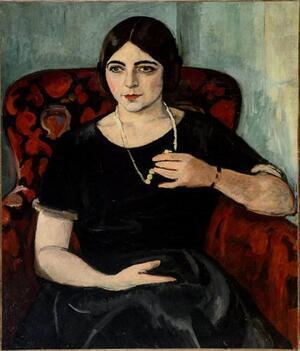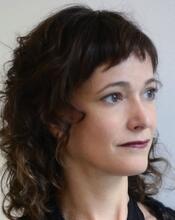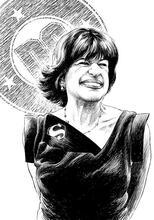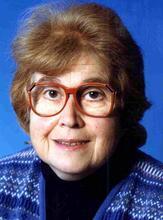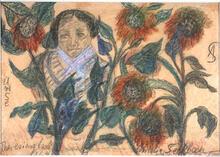Edith Gregor Halpert
Art dealer, collector, and businesswoman, Edith Gregor Halpert influenced American artistic tastes. Edith was born in Odessa in 1900, and she immigrated to New York City with her mother and sister at a young age. When she was fourteen years old, Halpert lied about her age to study at the National Academy of Design, and by twenty she developed a taste for modern art. After traveling to Paris to immerse herself in art, she opened the Downtown Gallery in Greenwich Village, specializing in modern art, and the American Folk Art Gallery, which remained in business throughout the Depression. In 1952 she founded the Edith Gregor Halpert Foundation, which promoted law codes and other measures to help guarantee the rights of artists.
Early Life and Family
Art dealer, collector, and influential businesswoman, Edith Halpert changed the way Americans perceive their art. Born in Odessa, [now] Ukraine, on April 25, 1900, she was the daughter of Gregor and Frances (Lucom) Fivoosiovitch. Her father died when she was very young and when she was six years old, her mother brought her and her sister to New York City. While in high school, at age fourteen, Edith took classes at the National Academy of Design after convincing the instructors she was really sixteen.
During this period, Halpert haunted the galleries of Newman Montross and Alfred Stieglitz, where she discovered a love for modern art, a taste that was frowned on by the academy. In 1918, she married Samuel Halpert, a fellow artist at the People’s Art Guild meetings. After her marriage, Halpert gave up painting to focus on her already flourishing career in business. Remarkably successful, she became an efficiency expert and by 1920 had been named to the board of the investment banking firm S.W. Straus & Company, with a then-unheard-of salary of six thousand dollars a year. In 1925, Halpert resigned from her job and, together with her husband, went to Paris for nearly a year. While there she realized that French artists had better opportunities to exhibit and sell new works than did Americans. When she returned to New York, she decided that she would open a gallery to showcase modern American artists. Against advice, in 1926 Halpert opened what became the Downtown Gallery in Greenwich Village—a setting removed from the typical uptown galleries, but where many artists lived.
Art Career
At that time, Halpert summered in Ogunquit, Maine, where she learned from the artists to love American folk art; she went on to promote the genre as the root of contemporary American art. In 1931, she opened the American Folk Art Gallery as part of the Downtown Gallery. Thanks to wealthy collectors, such as Abby Aldrich Rockefeller, whose support Halpert had cultivated, the gallery’s folk art collection became so popular that it helped support the rest of the gallery during the Depression. Earlier, Halpert had encouraged Rockefeller to found the Museum of Modern Art and to include art by American artists in Radio City Music Hall. Halpert was proud of the leading role she played in encouraging other dealers and municipal officials to sponsor municipal art exhibits. Her first such exhibit, in Atlantic City in 1929, was followed by one in New York City, sponsored by Mayor Fiorello LaGuardia in 1934. In 1941 her gallery held the country’s first commercial exhibition of Jacob Lawrence and other African-American artists.
In 1940 Halpert moved uptown and expanded to an entire building on East Fifty-first Street. By 1965, the gallery found its final home at the Ritz Tower on Park Avenue.
In 1952 she formed the Edith Gregor Halpert Foundation, which sought to guarantee the rights of artists. The foundation promoted codes to protect artists and to help them maintain control over the sale of their works. In 1959, at the height of the Cold War, Halpert was asked by the State Department to organize the American National Exhibition in Moscow, where she conducted tours in Russian for the local artists
Jewish Identity and Legacy
While Halpert was born Jewish she came to attribute her lack of religious knowledge to the absence of any male in her family. When she went to a rabbi to study Yiddish or Hebrew prayers, she was appalled to learn that “God played favorites!” In 1963 she asserted: “this female-male thing in prayers made a permanent impression on me… that distinction; that was an utter injustice.” She became an active member of the Friends of the Jewish Museum and in 1967 visited Israel, where she was received by Teddy Kollek at the Israel Museum. Halpert began to suffer from poor health by the late 1960s and toward the end developed increasingly strained relations with her artists. She died of cancer on October 6, 1970.
NAW; Obituary. NYTimes, October 7, 1970.
Halpert gave her papers to the Smithsonian Institution’s Archives of American Art [AAA].
together with the first part of her extensive 1963 interview, they are available online.

